Archive for the ‘Clinical Methods’ Category
Wednesday, March 7th, 2012
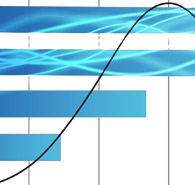 The careers of the scientist/practitioners in the field have undoubtedly had in common the experience of gradually rising expectations about what is possible to achieve in terms of improved self-regulatory capacity and mental functioning with the aid of neurofeedback. One might have expected some plateauing after a while, a firming up of one’s expectations, but the surprises keep coming and they are consistently on the upside. In our own experience, one of the biggest surprises has been the growing effectiveness of neurofeedback with PTSD, along with the related conditions of developmental trauma and the autism spectrum. All of these conditions had seemed so utterly intractable in the past. The careers of the scientist/practitioners in the field have undoubtedly had in common the experience of gradually rising expectations about what is possible to achieve in terms of improved self-regulatory capacity and mental functioning with the aid of neurofeedback. One might have expected some plateauing after a while, a firming up of one’s expectations, but the surprises keep coming and they are consistently on the upside. In our own experience, one of the biggest surprises has been the growing effectiveness of neurofeedback with PTSD, along with the related conditions of developmental trauma and the autism spectrum. All of these conditions had seemed so utterly intractable in the past.
In this newsletter, the focus on PTSD exists not only for its own sake, but also to serve as the best vehicle for the tackling of larger themes. What sets PTSD apart from our clinical work in general is the concentrated effort that has gone into this area by virtue of the great need among our returning veterans. We have attempted to meet this need through a non-profit entity, Homecoming for Veterans (hc4v.org), which has attracted even international participation among clinicians. As a result of these collective efforts, a large database of clinical results has been gathered that is now available for “data-mining.”
(more…)
Posted in Application of Neurofeedback, Clinical Methods, Neurofeedback, Protocols, PTSD, Research, Scientific, Veterans | 9 Comments »
Thursday, February 2nd, 2012
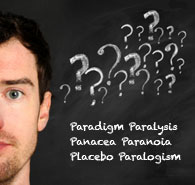 The field of neurofeedback has found itself subject to conflicting forces over the past decades, and it may be helpful to articulate some of the key factors that are driving our evolution as a discipline. On the one hand, we are subject to the constraints of a health care practitioner guild, and on the other we find ourselves in the much more uncertain terrain of frontier science. The demands of both are in essential conflict. The practitioner guild must represent to the world that a coherent system of practice exists, one grounded hopefully on a coherent model that is subscribed to by all of the practitioners. Guidelines and standards of practice likely follow to clarify for practitioners the choices that have been made for the sake of a credibly defensible public posture. The field of neurofeedback has found itself subject to conflicting forces over the past decades, and it may be helpful to articulate some of the key factors that are driving our evolution as a discipline. On the one hand, we are subject to the constraints of a health care practitioner guild, and on the other we find ourselves in the much more uncertain terrain of frontier science. The demands of both are in essential conflict. The practitioner guild must represent to the world that a coherent system of practice exists, one grounded hopefully on a coherent model that is subscribed to by all of the practitioners. Guidelines and standards of practice likely follow to clarify for practitioners the choices that have been made for the sake of a credibly defensible public posture.
On the other side we have the practical realities of frontier science, acknowledging that we are just beginning to understand the very powerful tool that we have at our disposal. The original hope (which I shared at the outset) was that a simple set of protocols derived from the original Sterman/Lubar research would serve our collective purposes. These simply needed to be pushed forward into general practice, while being subject merely to some subtle refinements. Our original NeuroCybernetics system was designed with very little flexibility because we did not see a need for it. This simple world view has had to be jettisoned.
(more…)
Posted in Application of Neurofeedback, Biofeedback, Clinical Methods, Neurofeedback, Professional Issues | 8 Comments »
Wednesday, March 10th, 2010
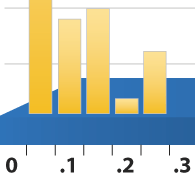 The first convincing evidence for EEG feedback efficacy in the management of pathophysiology was with regard to generalized seizures. The early work by Sterman, Lubar, as well as the subsequent follow-up by others, therefore remains a crucial point of reference for the various feedback techniques that have built upon the early protocol of SMR reinforcement combined the theta-band and high-beta band inhibition. Remarkably, the essential features of the early approach have been retained in the various evolutionary pathways that have emanated from the early work. This essential similarity has perhaps obscured other aspects of the training approach that have changed substantially over time, the significance of which may not have been fully appreciated except in reflection. In this newsletter we consider some of these changes and their implications generally, as well as for seizure management in particular. The first convincing evidence for EEG feedback efficacy in the management of pathophysiology was with regard to generalized seizures. The early work by Sterman, Lubar, as well as the subsequent follow-up by others, therefore remains a crucial point of reference for the various feedback techniques that have built upon the early protocol of SMR reinforcement combined the theta-band and high-beta band inhibition. Remarkably, the essential features of the early approach have been retained in the various evolutionary pathways that have emanated from the early work. This essential similarity has perhaps obscured other aspects of the training approach that have changed substantially over time, the significance of which may not have been fully appreciated except in reflection. In this newsletter we consider some of these changes and their implications generally, as well as for seizure management in particular.
The common thread in most modern neurofeedback approaches is the combination of a reinforcement strategy on one EEG frequency or another and an inhibit strategy based on detection of excursions into dysregulation. Some issues relating to the inhibit side have been relegated entirely to the software, thus removing them from ready visibility. Artifact detection and the division of labor between that and the conventional inhibits is a case in point. Specific targeting strategies typically remain to the discretion of the practitioner, as for example with respect to thresholding, placement, and frequency band selection. The general thrust over time has been to broaden the “field of view” of this EEG-based disregulation detector, mainly with respect to the frequencies being targeted, but sometimes also in terms of placement. Multi-channel instruments allow independent choice of placement for the reward and the inhibit strategies. Fortuitously, the various inhibit strategies being actively used—-though differing significantly from each other—-have not been wrapped up in much controversy.
(more…)
Posted in Application of Neurofeedback, Clinical Methods, Clinical Results, Efficacy, Neurofeedback | No Comments »
Thursday, July 16th, 2009
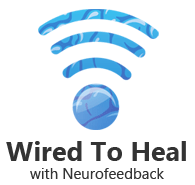 Dr. Siegfried Othmer the Chief Scientist for the EEG Institute goes onlinewithandrea to discuss Neurofeedback and how it is used to help conditions such as Anxiety, Autism, Cerebral Palsy, Depression, Seizures, Post Traumatic Syndrome, ADD/ADHD, Sleep Disorders, and many others. Dr. Siegfried Othmer the Chief Scientist for the EEG Institute goes onlinewithandrea to discuss Neurofeedback and how it is used to help conditions such as Anxiety, Autism, Cerebral Palsy, Depression, Seizures, Post Traumatic Syndrome, ADD/ADHD, Sleep Disorders, and many others.
Hosted by Andrea R. Garrison
This interview is approximately 2.5 hours in length.
To listen to this interview:
Click on the image of the multimedia player below to be taken to the blogtalkradio.com website.
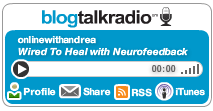
Posted in ADD / ADHD, Application of Neurofeedback, Clinical Methods, Commentary, Efficacy, Neurofeedback, Scientific | No Comments »
Monday, March 24th, 2008
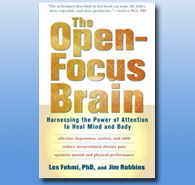 In this newsletter we take a look at two recently published books that represent two ends of the spectrum of neurofeedback approaches. They reflect divisions within the field that have remained unreconciled over the decades. They also reflect their authors, who have taken very different approaches in their scientific research. In this newsletter we take a look at two recently published books that represent two ends of the spectrum of neurofeedback approaches. They reflect divisions within the field that have remained unreconciled over the decades. They also reflect their authors, who have taken very different approaches in their scientific research.
The Open Focus Brain
This book could be said to have had a forty-year gestation period. It is a collaborative effort of Les Fehmi and Jim Robbins, and one suspects that Robbins’ recent involvement likely played a catalyst role that finally got the book to happen. The bulk of the book could equally well have been written decades earlier, as Les Fehmi’s model for his kind of neurofeedback has been consistent throughout.
Fehmi’s approach revolves around alpha training, but the salient hypothesis is that the synchrony of our neuronal assemblies strongly influences our state. By enhancing neuronal synchrony in the alpha band, we move to a calmer state of reduced arousal level. Our Western lifestyles tend to move us toward higher arousal level, and toward what Fehmi calls narrow and focused attention. This is energetically and physiologically costly. Practicing movement toward alpha synchrony allows us to explore the space in which our attention is more diffuse. We are more immersed in the experience. The work still gets done, but at a lower level of effort and with much less drain on our resources. (more…)
Posted in Clinical Methods, Neurofeedback, Protocols | No Comments »
Thursday, October 5th, 2006
I’ve been amazed at how some notables in this field have ignored the enormous data base in neuropsychology and either invented their own tests or else used really dumb tests which have not been validated on populations like the ones we see, and have limited face validity, and poor reliability.
I got into psychology whilst running under-funded practical field programs in the slums and among migratory field farmers so I have always wanted quick, dirty, reliable tests that are easy to administer and to score. When you sift through the neuropsych
literature with such a hungry, poverty-stricken hand as mine has been then you come up with challenging studies. For example: (more…)
Posted in Clinical Methods, Useful Tips | No Comments »
|
|
Subscribe to Email Newsletter
The EEG Info Newsletter circulates via email at least once a month. A variety of topics related to the Neurofeedback / EEG Biofeedback field are covered in over 200 articles.
|
 The careers of the scientist/practitioners in the field have undoubtedly had in common the experience of gradually rising expectations about what is possible to achieve in terms of improved self-regulatory capacity and mental functioning with the aid of neurofeedback. One might have expected some plateauing after a while, a firming up of one’s expectations, but the surprises keep coming and they are consistently on the upside. In our own experience, one of the biggest surprises has been the growing effectiveness of neurofeedback with PTSD, along with the related conditions of developmental trauma and the autism spectrum. All of these conditions had seemed so utterly intractable in the past.
The careers of the scientist/practitioners in the field have undoubtedly had in common the experience of gradually rising expectations about what is possible to achieve in terms of improved self-regulatory capacity and mental functioning with the aid of neurofeedback. One might have expected some plateauing after a while, a firming up of one’s expectations, but the surprises keep coming and they are consistently on the upside. In our own experience, one of the biggest surprises has been the growing effectiveness of neurofeedback with PTSD, along with the related conditions of developmental trauma and the autism spectrum. All of these conditions had seemed so utterly intractable in the past.
 The field of neurofeedback has found itself subject to conflicting forces over the past decades, and it may be helpful to articulate some of the key factors that are driving our evolution as a discipline. On the one hand, we are subject to the constraints of a health care practitioner guild, and on the other we find ourselves in the much more uncertain terrain of frontier science. The demands of both are in essential conflict. The practitioner guild must represent to the world that a coherent system of practice exists, one grounded hopefully on a coherent model that is subscribed to by all of the practitioners. Guidelines and standards of practice likely follow to clarify for practitioners the choices that have been made for the sake of a credibly defensible public posture.
The field of neurofeedback has found itself subject to conflicting forces over the past decades, and it may be helpful to articulate some of the key factors that are driving our evolution as a discipline. On the one hand, we are subject to the constraints of a health care practitioner guild, and on the other we find ourselves in the much more uncertain terrain of frontier science. The demands of both are in essential conflict. The practitioner guild must represent to the world that a coherent system of practice exists, one grounded hopefully on a coherent model that is subscribed to by all of the practitioners. Guidelines and standards of practice likely follow to clarify for practitioners the choices that have been made for the sake of a credibly defensible public posture. The first convincing evidence for EEG feedback efficacy in the management of pathophysiology was with regard to generalized seizures. The early work by Sterman, Lubar, as well as the subsequent follow-up by others, therefore remains a crucial point of reference for the various feedback techniques that have built upon the early protocol of SMR reinforcement combined the theta-band and high-beta band inhibition. Remarkably, the essential features of the early approach have been retained in the various evolutionary pathways that have emanated from the early work. This essential similarity has perhaps obscured other aspects of the training approach that have changed substantially over time, the significance of which may not have been fully appreciated except in reflection. In this newsletter we consider some of these changes and their implications generally, as well as for seizure management in particular.
The first convincing evidence for EEG feedback efficacy in the management of pathophysiology was with regard to generalized seizures. The early work by Sterman, Lubar, as well as the subsequent follow-up by others, therefore remains a crucial point of reference for the various feedback techniques that have built upon the early protocol of SMR reinforcement combined the theta-band and high-beta band inhibition. Remarkably, the essential features of the early approach have been retained in the various evolutionary pathways that have emanated from the early work. This essential similarity has perhaps obscured other aspects of the training approach that have changed substantially over time, the significance of which may not have been fully appreciated except in reflection. In this newsletter we consider some of these changes and their implications generally, as well as for seizure management in particular. In this newsletter we take a look at two recently published books that represent two ends of the spectrum of neurofeedback approaches. They reflect divisions within the field that have remained unreconciled over the decades. They also reflect their authors, who have taken very different approaches in their scientific research.
In this newsletter we take a look at two recently published books that represent two ends of the spectrum of neurofeedback approaches. They reflect divisions within the field that have remained unreconciled over the decades. They also reflect their authors, who have taken very different approaches in their scientific research.
Wired to Heal with Neurofeedback
Thursday, July 16th, 2009Hosted by Andrea R. Garrison
This interview is approximately 2.5 hours in length.
To listen to this interview:
Click on the image of the multimedia player below to be taken to the blogtalkradio.com website.
Posted in ADD / ADHD, Application of Neurofeedback, Clinical Methods, Commentary, Efficacy, Neurofeedback, Scientific | No Comments »